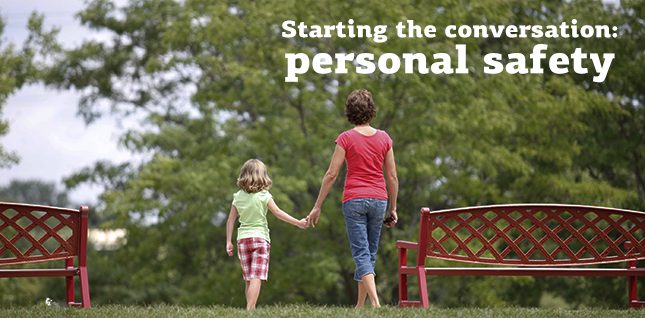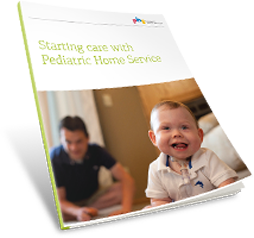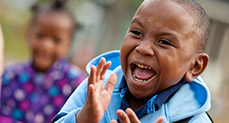Talking With Children and Teenagers About Personal Safety

The abduction of Jacob Wetterling in 1989 hit close to home (especially for those living in Minnesota), and changed parents’ view of safety in their towns. But in the wake of an unexpected and shocking situation, Patty Wetterling, Jacob’s mom, did something bigger than herself as she became an advocate and a resource for those around her. The Jacob Wetterling Resource Center was founded in 1990, and has been educating families and communities to prevent the sexual exploitation and abductions of children ever since. It recently merged with the Gundersen National Child Protection Training Center to expand its reach and increase its ability to offer resources and education.
In wake of the recent news regarding Jacob’s abduction, we found ourselves reflecting on the resources we have received from the JWRC over the years as they have come to educate our staff over the years. To increase awareness and spread education, we want to share some of those resources with you that can help children feel empowered, safe, and confident.
Age Appropriate Conversations
It can seem daunting to talk to young children about personal safety and asking for help if they need it, but starting the conversation doesn’t have to be a complex or overwhelming. The JWRC has created a resource reviewing how to talk to your kids about safety in a way that is appropriate for their age, and goes over what can be taught, challenges at the particular age, how to have the conversation, and what you can say to start the conversation. You can find the complete information on their website, but a few teachable items include:
Teach your toddler:
- Their name and guardian’s name
- Stay within sight
- Proper names for body parts and how private parts are different than the rest of their body
Teach your preschooler:
- How to use 911– your child should know their address, phone number and be able to describe the emergency
- Check first before going anywhere or getting into a car
- Say “no!” to uncomfortable or confusing touch
Teach your elementary school child:
- Family password – in case someone is sent to pick up child
- Create a list of five trusted adults to call about any problem
- Buddy system – safer and more fun to stay with a friend
Teach your middle/junior high schooler:
- Don’t put personal or emotional information online
- Difference between a mentor vs. relationship
- Cell phone (texting) guidelines – think before you send
Teach your high schooler:
- Review cell phone and internet expectations
- The importance of respecting others boundaries
- Listen to your gut instinct – leave situations or people that feel wrong
Five Trusted Adults
Think of the trusted adults that are in your child’s life – people they can go talk to if they’re feeling uncomfortable, something’s happened to them, or they’re working through something they may not want to talk to you about at the moment. This is something they can be taught in elementary school by talking to them about which adults they know and trust, and it’s important to have an up to date when a child is middle school/junior high age so your child still has a good relationship with these adults are and is hearing positive messages from them. Be aware of who is on that list, and be supportive if the list does not include you.
The ‘What If’ Game
By talking through hypothetical scenarios with your child, you can get some insight into how they would handle potentially dangerous situations, and also have the opportunity to coach them on what to do without having to do it in a lecture format.
Naomi Hupton, who spoke at PHS in 2014 on child abuse and neglect, goes through these scenarios with her own children.
“So you’re at Target, and you say to your young child, ‘what would you do if mommy lost you right now?” she said. “And when I’d first ask my children, they’d say they would find a policeman. But police aren’t typically in Target – so you can teach them what they should do.”
Other suggested ‘what if’ questions to ask your child include:
- What would you do if your brother’s friend gave you $20, but said to keep it a secret?
- What would you do if your neighbor offered you a ride home so you don’t have to walk?
- What would you do if you told an adult about something that made you feel afraid, but they didn’t believe you?
Additional Resources for Help
The resources here are just a few of the amazing education the Jacob Wetterling Resource Center and Gundersen National Child Protection Training Center holds on its website. There’s more information on how to talk to strangers, talking about touches, talking to children about scare news, and so much more. These organizations also recommend books to help teach adults and children about safety. These include:
- The Gift of Fear by Gavin De Becker
- Protecting the Gift by Gavin De Becker
- I Can Play it Safe by Alison Feigh
- My Body Belongs to Me by Jill Starishevsky
If you have any questions or need assistance with anything related to these topics, you can call 1-800-325-HOPE or 651-714-4673 to be connect directly with the Jacob Wetterling Resource Center.
Originally published: September 23, 2016

